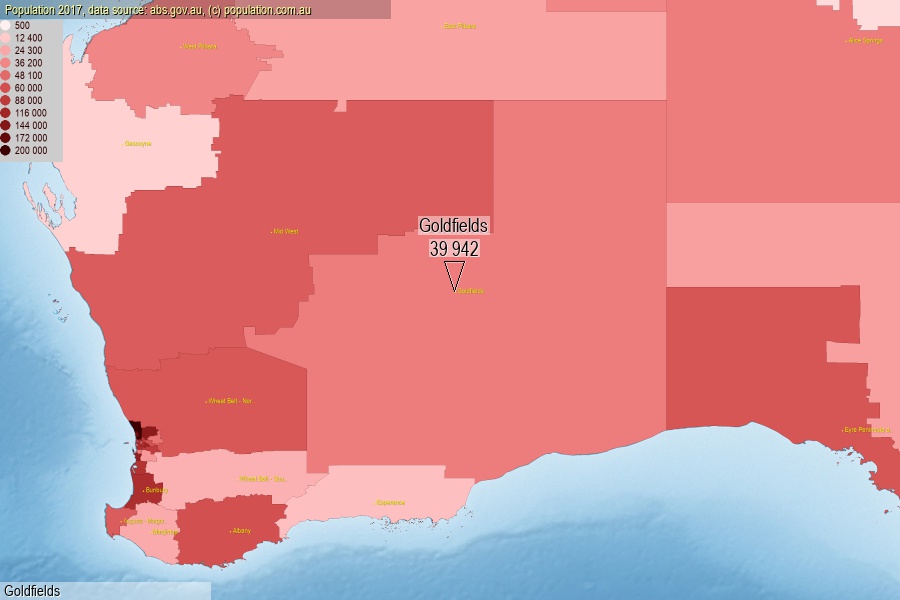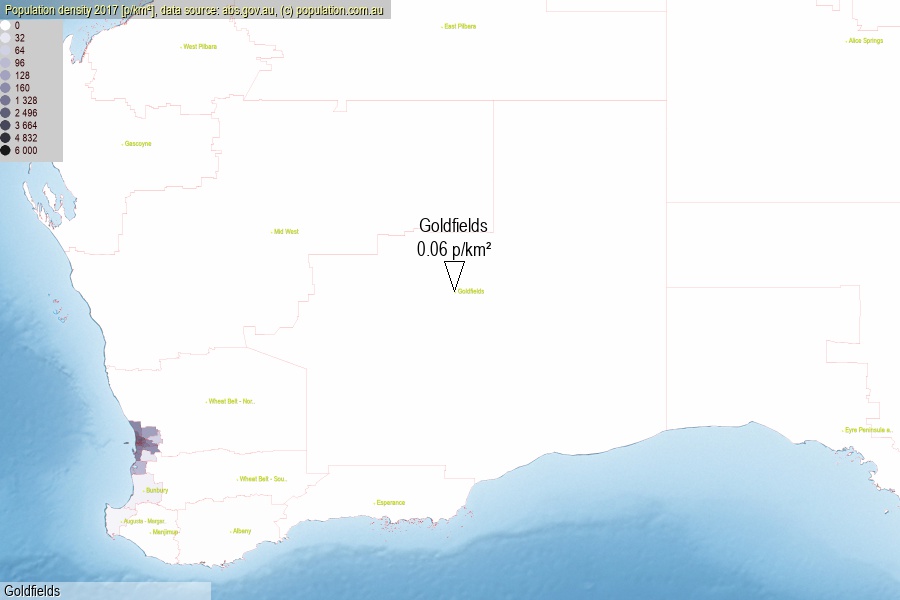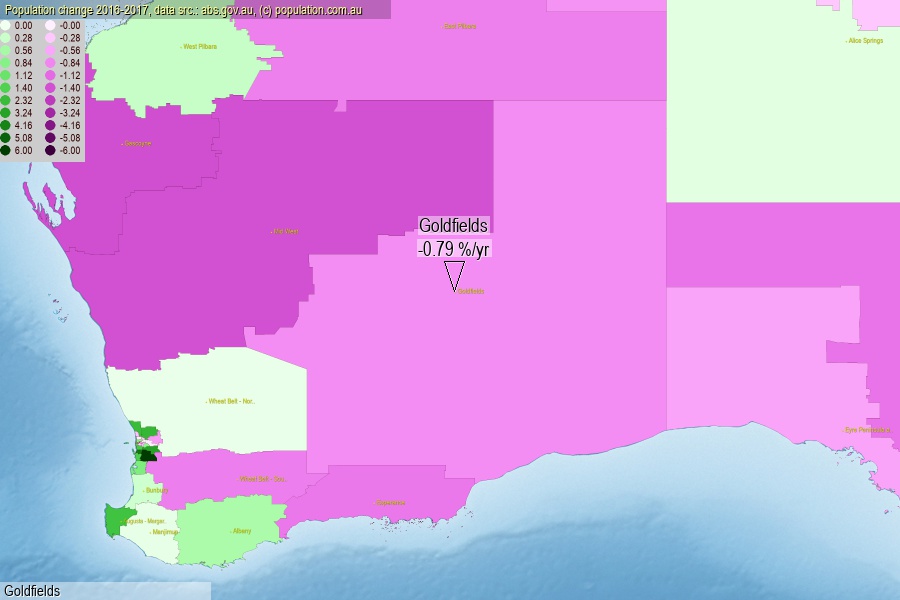 population.com.au
population.com.auLast official estimated population of Goldfields (as Statistical Area Level 3) was 39 942 people (on 2017-06-30)[2]. This was 0.16% of total Australian population and 1.541% of WA population. Area of Goldfields is 714 513.00 km², in this year population density was 0.06 p/km² . If population growth rate would be same as in period 2016-2017 (-0.79%/yr), Goldfields population in 2025 would be 37 472. [0]



Click to enlarge. Goldfields is located in the center of the images.
Population [people], population density [p./km²] and population change [%/year] [2]
View borders » (new window) [4]
[2001-2002] -0.81 %/Y
[2002-2003] +0.20 %/Y
[2003-2004] -1.43 %/Y
[2004-2005] -0.97 %/Y
[2005-2006] -0.08 %/Y
[2006-2007] +1.18 %/Y
[2007-2008] +2.71 %/Y
[2008-2009] +2.43 %/Y
[2009-2010] +1.84 %/Y
[2010-2011] +2.00 %/Y
[2011-2012] +1.81 %/Y
[2012-2013] +0.93 %/Y
[2013-2014] -3.00 %/Y
[2014-2015] -3.09 %/Y
[2015-2016] -3.86 %/Y
[2016-2017] -0.79 %/Y
[0] Calculated with linear interpolation from officially estimated population
[1] Read more about SA3 and Australian Statistical Geography Standard (ASGS) on abs.gov.au
[2] Population data from Australian Bureau of Statistics (Population and density: 2017; change: 2016-2017)
[3] Digital Boundaries: Australian Statistical Geography Standard (ASGS) 2016.
[4] Border coordinates are simplifyed using Ramer-Douglas-Peucker algorithm.